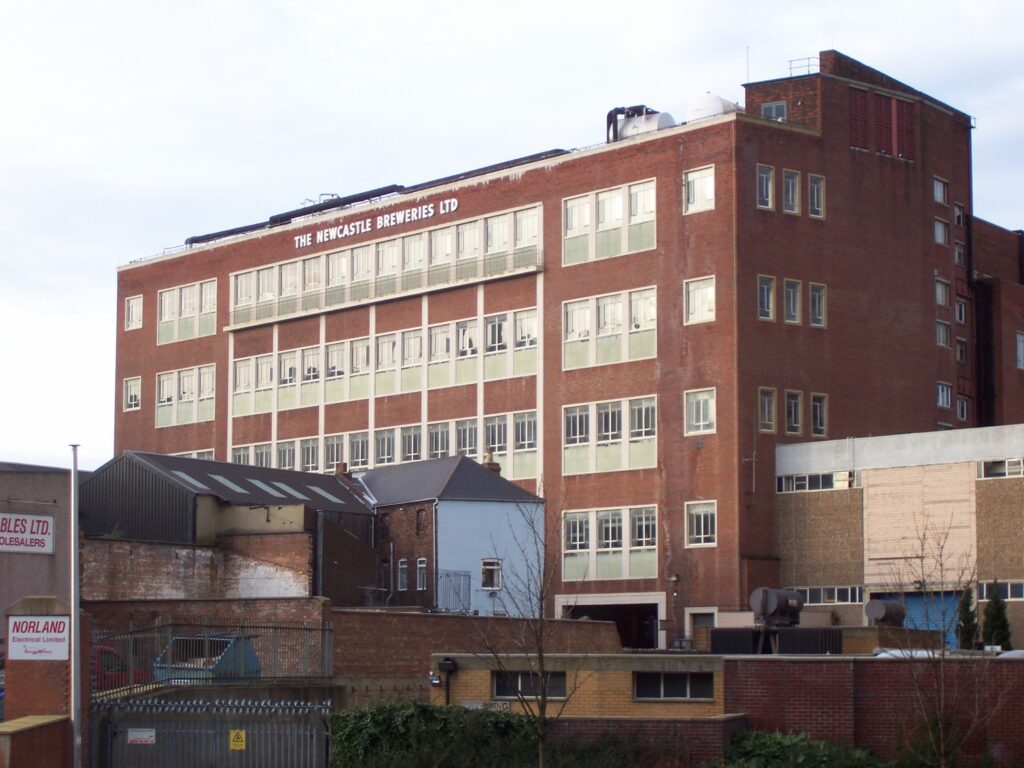Following on from his earlier posts of the history of the Centre for Rural Economy, Emeritus Professor Christopher Ritson recounts how research for a well-known local brand provided insight into North East beer drinkers habits.

Soon after I joined the Agricultural Marketing Department in 1980, we were approached by Newcastle Breweries with a request to investigate an issue which was troubling them over what seemed to be a major change in the market for their beers in the North East of England. “Newcastle Breweries” was then the English branch of “Scottish and Newcastle Breweries”. Their administration offices were located in the building which is now the Sandman Signature hotel in Gallowgate, with the old brewery in the area behind, which is now Science City. From the boardroom at the top of the building (this was prior to the massive development of St James’ Park) you could see most of the Newcastle United pitch. Newcastle Breweries was the first major sponsor of Newcastle United. Forty years later, you still sometimes see people wearing black and white shirts with the Blue Star and “Newcastle Brown Ale” on the front. The boardroom was, I suppose, much the same as any other, except that there was a tap set in one of the oak- panelled walls, from which Newcastle Exhibition could be poured.
The research questions
A lot of local companies at that time felt they “ought” to be doing some market research but were not quite sure what they wanted to find out. However, Newcastle Breweries came to us with two very specific research questions:
- Why were beer drinkers in the North East “switching” (this was their term) from their traditional preference for the Company’s high gravity beers to lighter beers and lager?
- Was this because their leading high gravity brand – Newcastle Exhibition – gave people headaches?
That there was a rumour going round that drinking Exhibition caused headaches was confirmed by the Faculty Registrar when I met him to discuss the funding requirements. Dealing with question 2) clearly raised tricky ethical issues and I met a drugs specialist in the Medical School to explore what might be possible. We did not, however, proceed with this. Talking to beer drinkers, it became apparent that, yes, if you drank a vast amount of Exhibition you got a headache. But this was also the case with the other popular high gravity brands such as those produced by the Sunderland company, Vaux, and the Federation Brewery, which supplied working men’s clubs throughout the North East. However, although “headaches” were therefore not specific to Exhibition, nor were they, we discovered, anything at all to do with the first question.

What we did
We designed a fairly conventional marketing research project. This consisted of around a dozen discussion groups (which would now be called “focus groups”, after the research technique was hijacked from Marketing by political parties). These fed into a survey of 1000 male beer drinkers in the North East, the breweries’ main target audience.
The discussion groups were professionally recruited and the survey was administered by a local market research agency. Each group consisted of 8-10 male beer drinkers, and was held in private rooms in pubs or clubs in Tyneside and South East Northumberland (with appropriate refreshments provided!). The participants really enjoyed talking about beer, their likes and dislikes, and how visiting pubs and clubs fitted into their lives. A wealth of information was obtained on the tradition and culture of beer consumption in the North East.
Being a local lad who could speak the language, at one group I played the role of a participant to see whether this might be a way of teasing out information which prompting from a moderator could not. On only one occasion did anything go wrong, and this was just a minor mishap. The group was held in the Rex Hotel in Whitley Bay, and the agency had been instructed to provide between 8 and 10 male beer drinkers aged (say) between 35 and 50. When we got there we found eight middle-aged males and one little old lady in the discussion room. We pushed ahead and the lady had as much to say about beer as the rest. However, when we broke for refreshments, it emerged that she was supposed to be at the flower arranging class in an adjacent room.
The survey collected mainly factual information to match the deeper information on culture and traditions which emerged from the groups: socio-economic data which could be related to brand preference and consumption levels. In the event, we had only 999 useable questionnaires. This was because we had only allowed for two digits in the computer coding system for answers to the question “How many pints of beer do you normally drink in a week” (Think about it!). The response was genuine. The agency supervisor checked it and this was a bachelor building worker who said he drank 12 pints at lunch time, and 12 in the evening, and typically would have “a couple of cans in the park while he was waiting for them to open”.
The answer
There was a fairly straightforward answer to Question 1. Beer drinkers in the North-East were not “switching” to lighter beers and lager. Virtually all the men we talked to remained as loyal as they had always been to their favourite beers (including Newcastle Exhibition). However, analysis of our survey data showed that lighter beers, and particular lager, were consumed predominantly by young (i.e., 18-25-year-old) consumers. The new generation was choosing a different product form their forebears.
With the benefit of hindsight, this conclusion looks blatantly obvious. But if it was, why had Newcastle Breweries assumed that “switching” was the explanation? A major social revolution was underway right under their noses, of which they were completely unaware. For what happened next – you’ll have to wait for Part 2.
